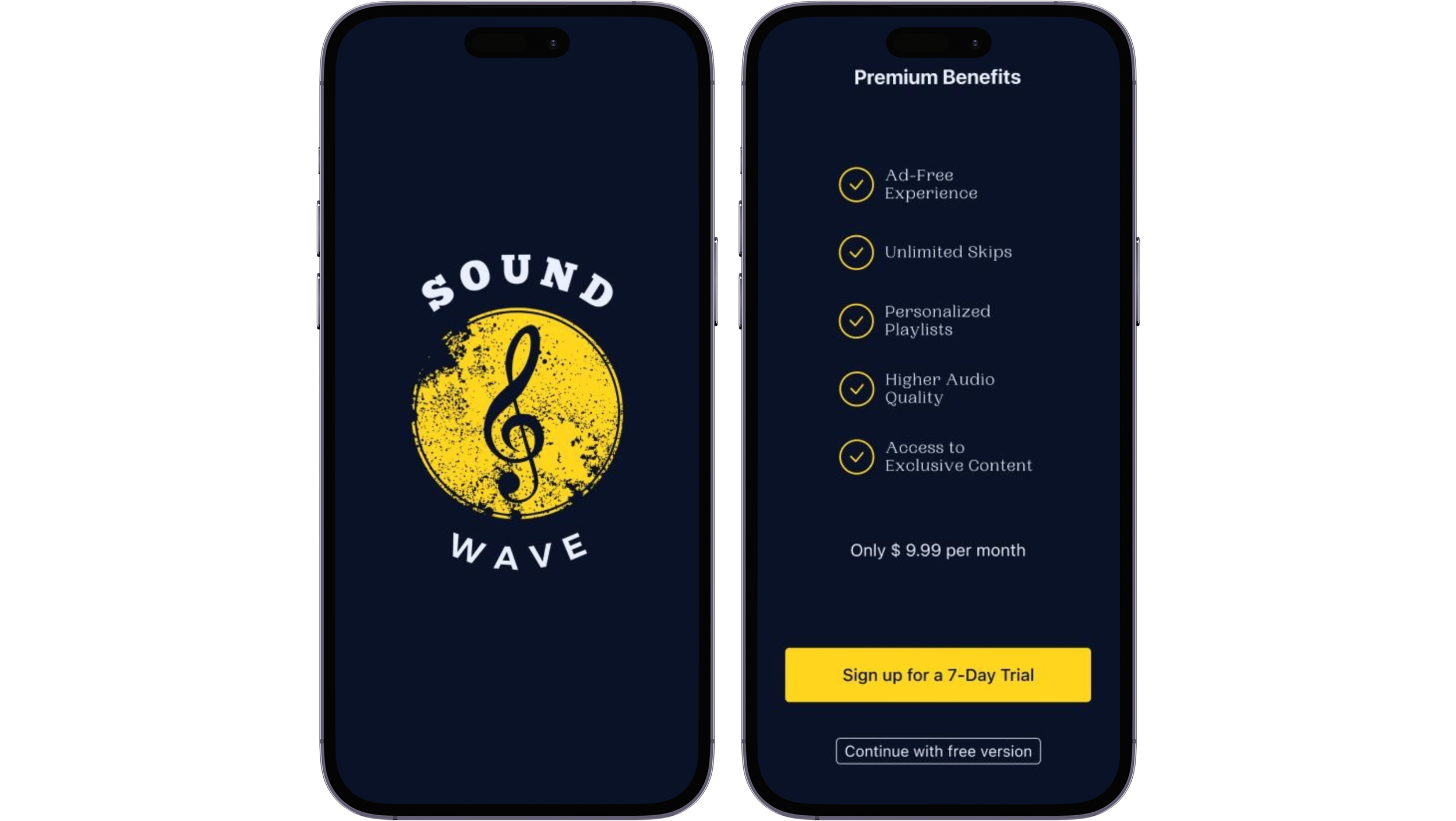SOUND WAVE
Amplifying Value: Enhancing Premium Music App Subscriptions with User-Centric Design
The Story Behind Sound Wave
Have you ever considered how music and sound shape our daily lives? Music adds joy to gatherings, creates special moments at weddings, soothes babies, and helps express emotions we can't put into words.
Sound Wave was born to ensure that the magic of music is always within reach, enhancing every moment and memory along the way.
Challenge overview
As a UX designer, I aimed to create a music app that generates revenue while providing an engaging user experience. With Sound Wave, my goal was to make it the go-to app that encourages premium subscriptions, balancing business success with user loyalty.
Approach
Create a modern and intuitive music app that engages users and effectively highlights premium subscription benefits, enhancing user satisfaction and driving engagement to achieve our business goals.
My Role
Research, Interaction Design, Visual Design, Prototyping, Testing
User Archetype
Design Process
Competitor Analysis
Researching the competition is crucial for sparking innovation. By analyzing apps like YouTube Music, Spotify, and Pandora, I designed a user-friendly experience that outshines the competition, helping to retain current users and attract new ones.
What Users Taught Me
While analyzing the competition is important, user feedback is essential. I actively gathered insights from music listeners on the bus, in the park, and at the gym. Their input highlighted the need for ad-free listening, offline access, and improved music discovery, directly shaping my design choices.
Meet Our Audience
Leveraging the user insights I gathered, I developed personas to capture their traits, pain points, and motivations. This approach guided the design process and ensured our solutions aligned with user needs, establishing a solid foundation for the next steps in crafting an impactful user experience.
Flowing Through the User Journey
In the early design stages, mapping user navigation paths shaped my initial sketches and defined key interactions, such as subscribing to the premium version and creating a favorite music list, ensuring user-friendly navigation and effective implementation of the premium feature.
Bringing Ideas to Life: Wireframes
In the early design stages, mapping user navigation paths shaped my initial sketches and defined key interactions, such as subscribing to the premium version and creating a favorite music list, ensuring user-friendly navigation and effective implementation of the premium feature.
Color Palette
I selected Oxford Blue (Hex #091227) for its depth, vibrant Gold (Hex #FFD51E) for energy, and Ghost White (Hex #EAF0FF) for a calming background. This accessible color palette ensures contrast and readability, enhancing usability and creating an inclusive musical experience.
High-Fidelity Designs
As I approached the final step of the design process, I focused on creating high-fidelity screens that breathed life into the app. This phase was more than just aesthetics; it was an opportunity to integrate colors, typography, and interactive elements into a cohesive and polished user interface.
Findings from Usability Feedback Discussions
User testing was essential for refining my design. I connected with five participants who took a moment from their activities to share feedback on important features like onboarding and premium subscriptions.
Their insights pointed out navigation issues and the need for clearer calls to action. By addressing these concerns, I improved usability and ensured the product met user expectations, leading to higher conversion rates for premium subscriptions. This experience highlights how valuable user involvement is in creating effective and engaging designs.
Conclusion
The design of the Sound Wave app effectively addressed user needs by leveraging insights from competitive research, user interviews, and usability testing.
This project has significantly contributed to my growth as a designer. By actively engaging with users and integrating their feedback into the design process, I’ve sharpened my skills to create user-centered solutions.













